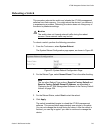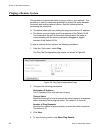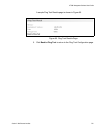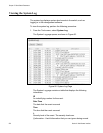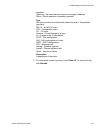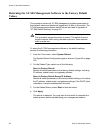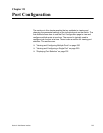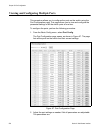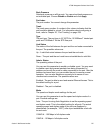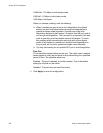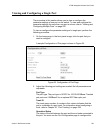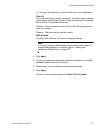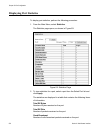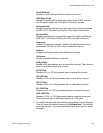AT-S84 Management Software User’s Guide
Section II: Web Browser Interface 227
Back Pressure
Sets back pressure on all the ports. You cannot set back pressure on
an individual port. Choose Disable or Enable and click Apply.
Port Index
The port number. You cannot change this parameter.
Trunk
The trunk group number. A number in this column indicates that the
port has been added to a trunk. For information about configuring a
trunk, refer to Chapter 20, “Port Trunking” on page 239.
Type
The port type. The port type is 10/100TX for 10/100Base-T twisted pair
ports and 1000Base-F for the SFP fiber port.
Link Status
The status of the link between the port and the end node connected to
the port. The possible values are:
Up - A valid link exists between the port and the end node.
Down - The port and the end node have not established a valid link.
Admin. Status
The operating status of the port.
You can use this parameter to enable or disable a port. You may want
to disable a port and prevent packets from being forwarded if a
problem occurs with the node or cable connected to the port. After the
problem has been fixed, you can enable the port to resume normal
operation. You can also disable an unused port to secure it from
unauthorized connections. The possible values are:
Enabled - The port is able to send and receive Ethernet frames. This is
the default setting for a port.
Disabled - The port is disabled.
Mode
The speed and duplex mode settings for the port.
You can use this parameter to set the speed and duplex mode of a
port. Possible settings are:
Auto - The port is using Auto-Negotiation to set the operating speed
and duplex mode. This is the default setting for all ports. The actual
operating speed and duplex mode of the port are displayed in
parentheses (for example, “100F”) after a port establishes a link with
an end node.
100M/Full - 100 Mbps in full-duplex mode
10M/Full - 10 Mbps in full-duplex mode



